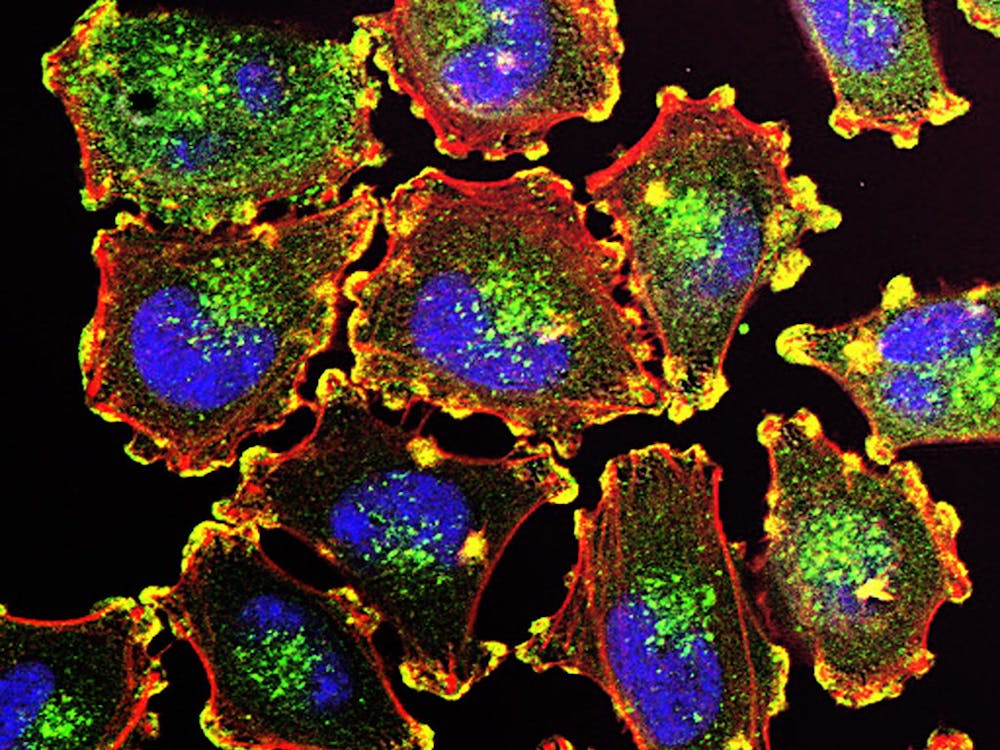I can’t say I’ve always been an avid believer in the existence of extraterrestrial life.
I never truly considered that life might exist somewhere else in our universe — at least not until I realized just how tiny our planet really is.
Once I understood that we are nothing more than a microscopic speck of dust within the Milky Way, it then seemed impossible to me that there wouldn’t be life out there, somewhere.
While I won’t go so far as to say that there are aliens duking it out on some light-speed traveling spacecraft (although that would fulfill all our science fiction fantasies), I do firmly believe that a community of single-celled organisms are replicating their days away somewhere up in the sky.
I’m not the only one; real life scientists have set to work scouring the universe for planets with the right conditions to cultivate life. And this past year, they’ve found one: planet e of the TRAPPIST-1 system.
TRAPPIST-1 is a dwarf star located 39 light years away in the constellation Aquarius. Compared to our sun, it is much, much cooler and much, much smaller. Because not as much heat is given off by TRAPPIST-1, the probability of life around the star should logically be small.
However, because of the tight orbit of TRAPPIST-1’s seven known exoplanets, they actually may be within an inhabitable zone. The planets are all terrestrial (rocky, as opposed to gas), approximately Earth-sized and transit their sun (meaning they pass in front of TRAPPIST-1, from our view on Earth), making it our current, most ideal system to research and analyze for life.
The seven planets of TRAPPIST-1, from closest to furthest from their sun, are planets b, c, d, e, f, g and h. Researcher Eric T. Wolf of University of Colorado, Boulder, set out on a mission to further research these planets and analyze their propensity to cultivate life.
Since Earth is our one and only example of a life-supporting planet, our search for other habitable planets means looking for exoplanets similar to Earth. Long story short, we must find something we all likely take for granted: liquid water.
Now at this point you might be asking the same question that I have asked for years: Why should we assume that life needs water? Isn’t it possible for some tiny single celled organism to live in an environment without water?
The answer is that liquid water is a highly unique substance and acts in organic processes in such a specific way that we have yet to find a molecule to replace it.
That’s why, in Wolf’s quest to determine the probability of life in the TRAPPIST-1 system, he evaluated the potential atmospheres of the planets to determine if they could retain the heat needed to keep water in its liquid state.
Liquid water requires a surface temperature of 273 K to 373 K. Too low, it freezes, and too high, it turns to gas.
All the planets were initially thought to be in the range, but Wolf found that only TRAPPIST-1e, the middle of the seven planets, could realistically support life. He used the National Center for Atmospheric Research Community Atmosphere Model version 4, which has previously been used to study many Earth-like atmospheres, to simulate the conditions of their surfaces over time.
Assuming the initial conditions of a surface with complete liquid water and various atmospheric conditions with nitrogen, carbon dioxide and gaseous water (conditions similar to Earth), Wolf ran the simulation to determine the feasibility of life.
Wolf found that planets b, c and d, the innermost planets, would experience a “runaway greenhouse” effect, a vicious cycle where the atmosphere traps heat and that heat causes a thicker atmosphere, which traps even more heat and on and on. This is very bad for the presence of liquid water, since it would quickly (in terms of an astronomical timeframe) boil and evaporate.
Planets f, g and h, the outermost planets, would meet the opposite fate, sliding into a “snowball state.” Even at the most ideal conditions, the atmosphere of these planets could not retain enough heat to keep their surfaces from becoming covered in ice.
TRAPPIST-1e, however, seems to hit the jackpot. Under a multitude of atmospheric conditions, planet e can maintain a stable enough temperature to retain liquid water, allowing for life to possibly begin. And just like that, the possibility of finding extraterrestrial life has once again increased.
Although the remote possibility of finding water in space may seem underwhelming, I must disagree.
It is amazing that humans can point cameras to the heavens and determine the feasibility of life staring back at us.
The system of TRAPPIST-1 was first discovered in 2011, and in six years we have certainly learned a lot about the universe outside our little solar system. This dwarf star system, 39 light years away from you and me, is a breeding ground for imagination that is currently being turned into science.
And, considering the young age of our adventure into astrobiology, it makes me wonder: How many more life-sustaining planets are we soon to find?






















Please note All comments are eligible for publication in The News-Letter.